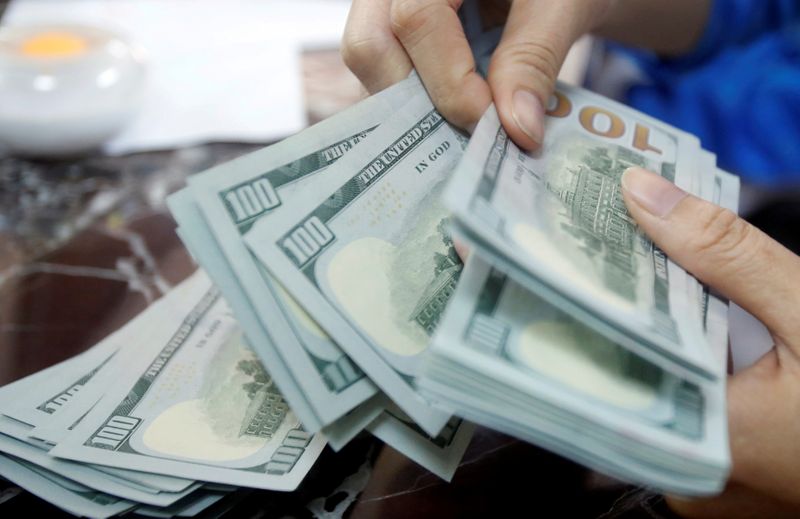NEW YORK (Reuters) – The U.S. dollar would probably come under further pressure if the Federal Reserve adopts targets for U.S. Treasury yields that would limit their rise and ensure that interest rates remain near zero for some time.
Capping bond yields could diminish the attractiveness of U.S. Treasury debt, as investors look to other alternatives, analysts said. That may exacerbate a downtrend in the U.S. currency that has been partly triggered by a gradual reopening of global economies following shutdowns aimed at curbing the spread of the novel coronavirus.
Since late May, the dollar has fallen about 4.2% against a basket of major currencies.
The Federal Reserve did not announce any measures to cap the rise of bond yields on Wednesday at the end of its two-day meeting. But in a press briefing, Fed Chairman Jerome Powell said the central bank would consider yield curve controls once it gets a better understanding of where the economy is headed.
New York Fed President John Williams and Fed Governor Lael Brainard had raised the idea earlier as a possible complement to other monetary policy actions aimed at keeping rates and borrowing costs ultra-low to spur spending and buoy the economy.
Such a move is seen as a potential policy tool at the central bank’s disposal and could come about later in the year.
Instead of simply setting short-term rates, the Fed could set specific target rates anywhere from bills to notes and bonds.
This has been done in Japan and Australia, and once before in the United States when the Fed and the Treasury agreed to cap borrowing costs to finance spending during World War II.
Analysts said that if the Fed does decide to adopt this policy, it will likely cap Treasury yields out to three or even five years, a move that could undermine the dollar.
“If you put yield curve control, it is usually bad for the currency because yields are very low, so there is no incentive to buy the bonds,” said Momtchil Pojarliev, head of currencies at BNP Asset Management in New York.
Boris Schlossberg, managing director at BK Asset Management in New York, said a Fed announcement on yield curve control could push the euro higher against the dollar to the $1.14-$1.15 level from $1.1368 currently.
After trading in narrow ranges for several weeks, Treasury yields surged last week, as the benchmark U.S. 10-year yield approached 1.0%, amid better-than-expected U.S. economic data.
BNP’s Pojarliev said, however, he does not expect the Fed to take such steps, but if it does and it weakens the dollar even more, it would be an opportunity to go long on the currency because of how oversold the greenback has become.
Some analysts said given the ferocious rally in bond yields last week, investors may have already begun to price in this monetary policy measure. U.S. 10-year yields slid below 0.90% this week and the dollar sold off against the yen.
Analysts said Japanese investors have also started selling the dollar ahead of the Fed’s policy decision.
“I think investors have been selling the dollar because they think the Fed will be aggressive with yield curve control,” said John Floyd, principal portfolio manager for the dynamic macro currency strategy at Record Currency Management in New York.
Adrian Helfert, director of multi-asset portfolios at wealth manager Westwood in Dallas expects the dollar’s weakness to be more pronounced if the Fed makes some form of yield curve announcement.
“Take the euro zone for instance, where we’re seeing a shift to fiscal stimulus. Big fiscal stimulus has a different effect than monetary policy in pushing down or lifting the relevant currency,” he said.
“The more we bring in monetary policy relative to our partners like what the Fed is doing, the more the dollar is going to depreciate against those partners.”
(Reporting by Gertrude Chavez-Dreyfuss; Editing by Alden Bentley, Bernadette Baum and Diane Craft)

















